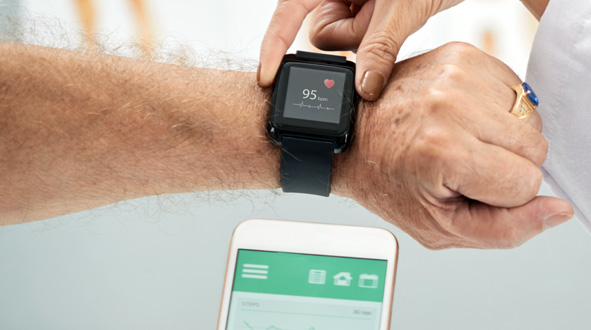Maxim optical sensor cuts size for health wearables
- July 14, 2020
- Steve Rogerson

Californian electronics company Maxim Integrated has developed an optical sensor for wearable health and fitness products. The drop-in module includes built-in algorithms for heart-rate and oxygen-saturation (SpO2) monitoring, as well as activity classification.
The Max M86146 dual-photodetector optical sensor is said to enable biosensing features in less space and support the rapid development of accurate, continuous health-monitoring devices.
The company says it will help designers achieve a 45 per cent thinner optical design compared with a discrete approach. Additionally, the module offers ready-to-use biosensing algorithms that measure vital signs to rigorous medical standards. It can save designers up to six months in bringing products to market and provides extra time and space to expand functionality.
“By cutting our development time, Maxim Integrated’s state-of-the-art optical sensor enabled us to leap-frog the competition by allowing us to focus on new feature introductions,” said Satish Movva, founder and CEO of CarePredict. “In addition, caregivers got unprecedented remote access to the activity and behaviour indicators of seniors through the CarePredict wearable to help manage their health conditions from afar.”
The revolution in wearable health monitors is gaining momentum as it provides access to health insights that help medical professionals and end-users proactively manage preventative care needs and chronic conditions. Developers strive to continue this momentum by creating innovations to provide deeper insight into health conditions and open doors to improve wellness.
The company claims it is the world’s thinnest dual-photodetector optical sensor. It combines two photodiodes, an optical AFE and a microcontroller with built-in algorithms for activity classification, heart rate and SpO2 in a 0.88mm package.
“Design space and time-to-market are at a premium for designers of next-generation wearable healthcare monitors,” said Andrew Baker, managing director of Maxim’s industrial and healthcare business. “With the world’s thinnest dual-photodetector optical sensor, we enable greater capacity for designers to rapidly introduce innovative capabilities.”
Maxim develops analogue and mixed-signal products and technologies with security and energy efficiency in automotive, industrial, healthcare, mobile consumer and cloud data centre markets.




